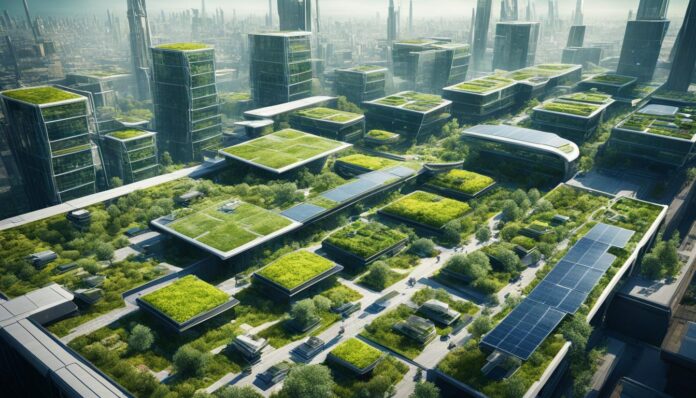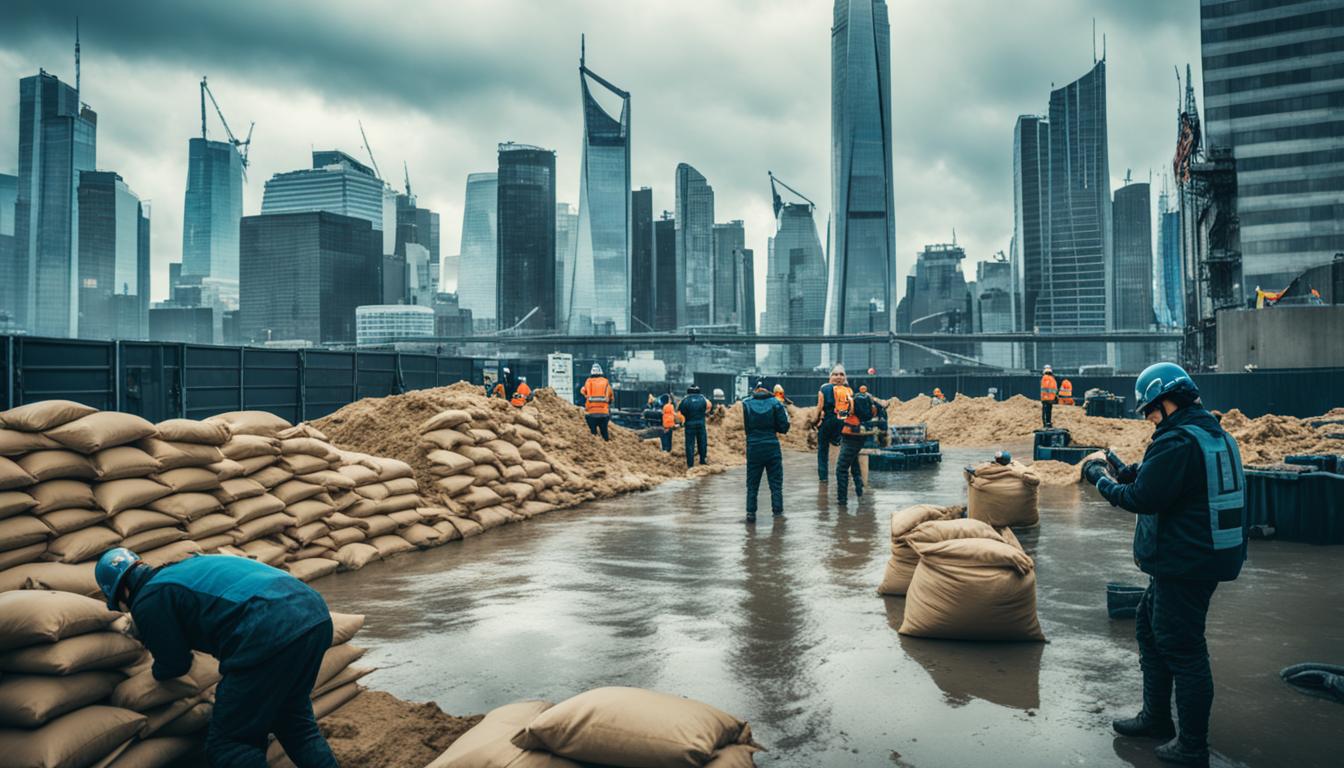
The world has just concluded the hottest decade on record, and the impacts of climate change are escalating rapidly. From the increasing frequency and severity of extreme weather events like forest fires, heatwaves, and hurricanes, to the slow onset of threats like desertification and sea level rise, the effects of a changing climate are being felt across the globe. In the European Union alone, these climate-related impacts are causing economic losses averaging over $12 billion per year, and could result in annual losses of at least 1.36% of GDP if global warming reaches 3°C. To secure a sustainable future for your region, it’s crucial to take urgent and transformative action to adapt to these growing challenges.
Whether you’re facing the risks of drought, flooding, or extreme temperatures, developing a comprehensive climate adaptation strategy is essential for preparing your community for the impacts of climate change by 2025. This will involve understanding your region’s unique vulnerabilities, monitoring key climate change indicators, and mapping potential hazards. By taking these crucial steps, you can create a tailored adaptation plan that addresses sustainability, disaster preparedness, and resilient infrastructure – all of which are necessary to build a climate-resilient future.
Key Takeaways
- The impacts of climate change, from extreme weather to slow onset threats, are escalating rapidly and causing significant economic losses.
- Developing a comprehensive climate adaptation strategy is essential for preparing your region for the impacts of climate change by 2025.
- Understanding your region’s vulnerabilities, monitoring climate change indicators, and mapping potential hazards are crucial first steps in creating an effective adaptation plan.
- Addressing sustainability, disaster preparedness, and resilient infrastructure are key components of building climate-resilient communities.
- Urgent and transformative action is needed to adapt to the growing challenges posed by a changing climate and secure a sustainable future for your region.
Understanding Regional Climate Risks
The 2021 EU Adaptation Strategy has recognized the pressing need to adapt to the impacts of climate change. As part of this strategy, the Climate Change Adaptation Mission aims to support at least 150 European regions and communities in becoming more climate-resilient by 2030. This support will involve helping regions and communities better understand, prepare for, and manage the risks and opportunities associated with a changing climate.
A crucial first step in this process is assessing local climate vulnerabilities. By closely analyzing factors like temperature patterns, precipitation trends, sea level rises, extreme weather events, and ecosystem changes, regions can identify their specific vulnerabilities and develop targeted adaptation strategies. Monitoring these climate change indicators and tracking relevant environmental data is essential for informing effective adaptation measures.
Another important component is mapping potential climate hazards within the region. Geographic information systems and spatial risk analysis can be used to pinpoint areas that are vulnerable to threats such as flooding, droughts, wildfires, and extreme temperatures. This involves considering factors like topography, infrastructure, population density, and ecosystem health to determine high-risk locations. By creating detailed climate hazard maps, communities can better prepare for and mitigate the impacts of climate change on their region.
Taken together, these efforts to assess local vulnerabilities, monitor climate change indicators, and map potential hazards provide a comprehensive understanding of the regional climate risks. This knowledge is essential for informing the development of effective adaptation plans and building climate resilience across communities.
How do I prepare for the impact of climate change on my region by 2025?
To prepare for the impacts of climate change by 2025, regions and communities must develop comprehensive climate adaptation plans that outline concrete steps to build resilience. This involves co-creating innovation pathways and testing transformative solutions with local stakeholders, including citizens, businesses, and government entities. Adaptation plans should address a range of areas, such as sustainable infrastructure, disaster preparedness, ecosystem conservation, and renewable energy transition. Effective adaptation will require mobilizing support and engagement across sectors, as well as securing financing from public-private partnerships.
Implementing Sustainable Practices
Implementing sustainable practices is crucial for preparing regions to withstand the impacts of climate change. This includes initiatives to reduce greenhouse gas emissions, such as transitioning to renewable energy, improving energy efficiency in buildings, and promoting sustainable transportation. Nature-based solutions, like urban forestry and green infrastructure, can also enhance climate resilience by regulating temperatures, managing stormwater, and protecting ecosystems. Incorporating sustainability across all sectors, from agriculture to urban planning, will be essential for building climate-resilient communities.
Enhancing Disaster Preparedness
Enhancing disaster preparedness is a key component of climate change adaptation. This involves developing robust emergency response plans, strengthening early warning systems, and implementing measures to mitigate the impact of climate-related hazards, such as floods, droughts, and extreme weather events. Regions should assess their vulnerabilities, identify high-risk areas, and invest in infrastructure and services that can withstand and recover from disasters. Collaboration between local authorities, emergency services, and community organizations will be critical for ensuring effective disaster preparedness and response.

Climate-Resilient Infrastructure and Communities
Building climate-resilient infrastructure and communities is essential for adapting to the impacts of climate change. This includes implementing nature-based solutions for buildings, such as using green roofs, urban forests, and other vegetation to regulate temperatures, manage stormwater, and enhance biodiversity. Combining these “green” solutions with “grey” engineering approaches can provide comprehensive climate adaptation benefits. Examples include the use of Trombe walls, water walls, and other passive design elements to improve energy efficiency and thermal comfort in buildings. Investing in climate-resilient infrastructure can also save trillions of dollars in avoided climate change damages.
Resilient Housing and Urban Design
Designing resilient housing and urban spaces is crucial for preparing communities for the impacts of climate change. This can involve techniques like elevating buildings to mitigate flood risk, using round-shaped and aerodynamic structures to withstand strong winds, and incorporating insulation and passive heating/cooling strategies to address temperature extremes. Urban planning that prioritizes green spaces, water management, and transportation alternatives can also enhance community resilience. Combining these design approaches with sustainable practices and disaster preparedness measures can help create climate-adaptive settlements.
Green and Renewable Energy Transition
Transitioning to green and renewable energy sources is a critical component of building climate-resilient communities. This involves integrating renewable energy systems, such as solar, wind, and geothermal, into buildings and infrastructure, as well as implementing energy efficiency upgrades to reduce overall consumption. Decarbonization strategies that target emissions across sectors, from transportation to industry, can also significantly mitigate climate change impacts. Investing in clean technology innovation and supporting the development of sustainable energy solutions will be essential for enabling this green energy transition and enhancing community resilience.
Conclusion
Preparing for the impacts of climate change adaptation by 2025 will require a comprehensive, multi-faceted approach that addresses regional climate resilience, implements sustainability initiatives, and enhances disaster preparedness. By understanding local vulnerabilities, monitoring climate change indicators, and mapping potential hazards, communities can develop targeted adaptation plans that build resilience across climate-resilient infrastructure, housing, and urban design.
Investing in nature-based solutions, renewable energy, and other climate-resilient measures can help mitigate the devastating effects of a changing climate. Ultimately, a concerted effort involving citizens, businesses, and all levels of government will be necessary to ensure communities are equipped to withstand the escalating threats posed by climate change.
As we strive to create a more sustainable and resilient future, the key lies in our collective ability to embrace climate change adaptation strategies, foster regional climate resilience, and implement comprehensive sustainability initiatives that address disaster preparedness and climate-resilient infrastructure. By working together, we can build the foundations for a more secure and prosperous tomorrow, even in the face of the challenges presented by our changing climate.
FAQ
How can I assess the local climate vulnerabilities in my region?
Assessing local climate vulnerabilities involves analyzing factors like topography, infrastructure, population density, and ecosystem health to identify high-risk areas. This can be done through spatial risk analysis and geographic information systems (GIS) mapping.
What climate change indicators should I be monitoring in my region?
Key climate change indicators to monitor include temperature and precipitation patterns, sea level rises, extreme weather events, and ecosystem changes. Closely tracking these indicators can help you better understand regional climate risks and develop targeted adaptation strategies.
How can I map potential climate hazards in my region?
Mapping potential climate hazards, such as flooding, droughts, wildfires, and extreme temperatures, can be done using GIS and spatial risk analysis. This involves analyzing factors like topography, infrastructure, and ecosystem health to identify high-risk areas that are vulnerable to specific climate-related threats.
How do I develop a climate adaptation plan for my region?
Developing a climate adaptation plan involves co-creating innovation pathways and testing transformative solutions with local stakeholders, including citizens, businesses, and government entities. The plan should address areas like sustainable infrastructure, disaster preparedness, ecosystem conservation, and renewable energy transition.
What sustainable practices can I implement to prepare my region for climate change?
Sustainable practices for climate change adaptation include initiatives to reduce greenhouse gas emissions, such as transitioning to renewable energy, improving energy efficiency in buildings, and promoting sustainable transportation. Nature-based solutions, like urban forestry and green infrastructure, can also enhance climate resilience.
How can I enhance disaster preparedness in my region?
Enhancing disaster preparedness involves developing robust emergency response plans, strengthening early warning systems, and implementing measures to mitigate the impact of climate-related hazards, such as floods, droughts, and extreme weather events. Collaboration between local authorities, emergency services, and community organizations is crucial for effective disaster preparedness and response.
What are some climate-resilient infrastructure and design strategies for my region?
Climate-resilient infrastructure and design strategies include implementing nature-based solutions for buildings, such as using green roofs, urban forests, and passive design elements to regulate temperatures, manage stormwater, and enhance biodiversity. Investing in climate-resilient infrastructure can also save trillions of dollars in avoided climate change damages.
How can I transition to green and renewable energy sources in my region?
Transitioning to green and renewable energy sources involves integrating renewable energy systems, such as solar, wind, and geothermal, into buildings and infrastructure, as well as implementing energy efficiency upgrades to reduce overall consumption. Decarbonization strategies that target emissions across sectors, from transportation to industry, can also significantly mitigate climate change impacts.
